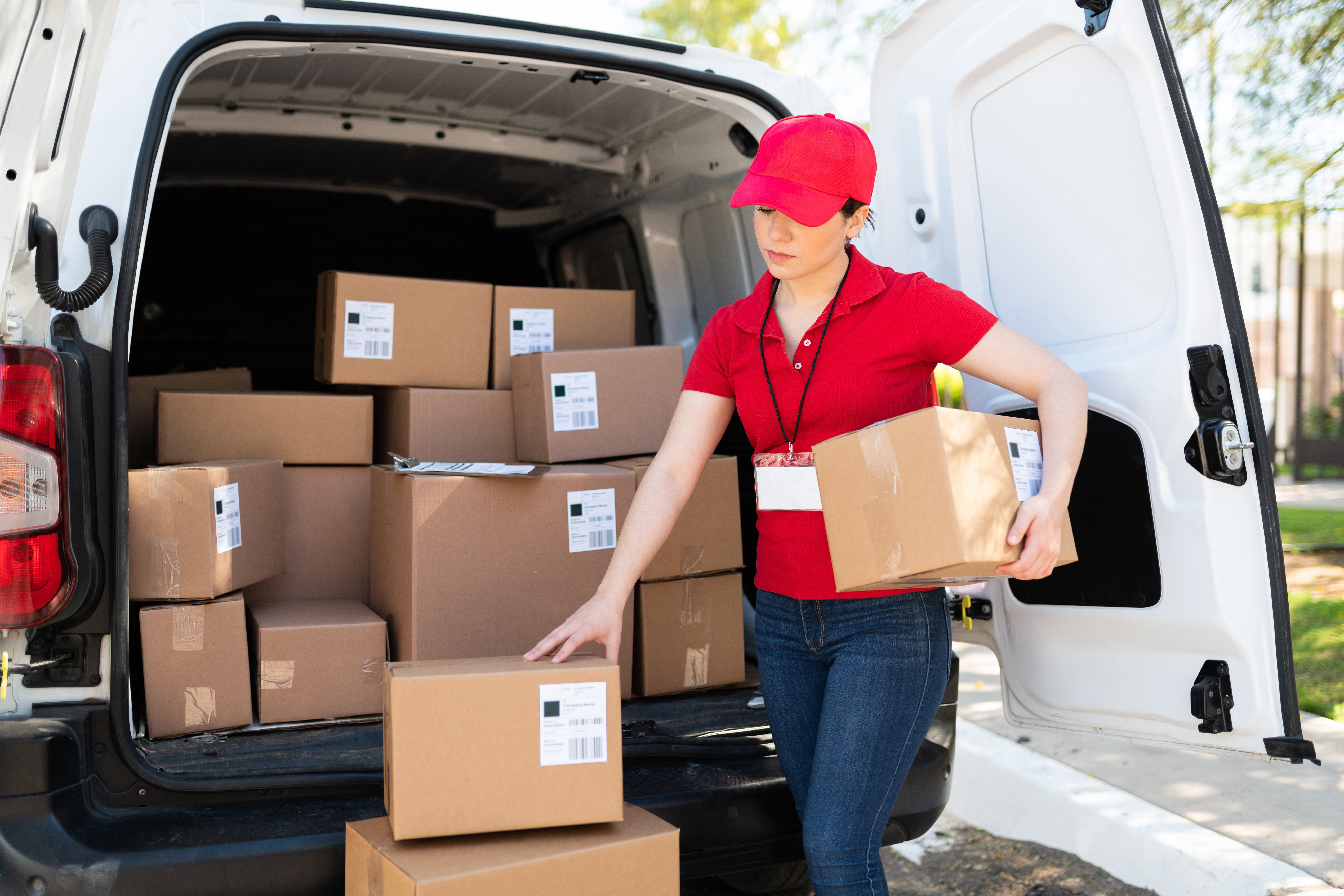
Today’s world depends on delivery truck drivers. According to the Bureau of Labor Statistics, nearly 1.7 million drivers are hitting the road daily to make deliveries.
For driver safety managers and professionals, making sure that these deliveries are made without incident is always top of mind, but delivery drivers face various challenges. In fact, the BLS reported that delivery workers and truck drivers experienced the highest number of fatal on-the-job accidents in 2019, with nearly 2,000 drivers losing their lives. The cause of the fatalities was “transportation incidents,” or crashes with other vehicles, objects, or pedestrians.
Tips for Truck Driver Safety
Keeping delivery drivers safer behind the wheel begins with knowing some of the challenges they face. Here are three common problems for delivery truck drivers — and how to resolve them.
Threat No. 1: Re-entering Traffic
Each time a driver merges into traffic, the risk of a potential collision looms. For the average person, this risk arises only a few times a day, if that. In contrast, delivery drivers who navigate multiple stops as part of their daily routes may find themselves facing this situation more than a dozen times daily, increasing their vulnerability to accidents.
Solution: Implementing the Smith5Keys® can be particularly valuable when it comes to merging safely into traffic. To enhance safety during these maneuvers, drivers should aim to create a buffer of space around their vehicles. The Smith5Keys provide essential training in safety techniques, including optimizing mirror usage and allowing more time and distance to respond to changing traffic conditions.
Threat No. 2: Parking
While parking alone can cause issues for drivers, it’s not the only problem. Backing out of a parking space also poses a major risk. The bigger the vehicle, the bigger the blind spot — and the more at-risk drivers are for a backing crash.
Solution: If a driver never backs up, they can’t have a backing collision. Before parking, drivers should think about how they will leave the space, and then do what they can to avoid backing. Looking for ways to approach the destination without having to ever put the vehicle in reverse will make it easier and safer to exit.
Threat No. 3: Close-quarter Maneuvering
Delivery drivers frequently encounter the challenge of navigating through alleys and tight spaces while making their deliveries. These situations often involve sharp turns, narrow roadways, and tight entryways into parking areas, making maneuvering a complex task.
Solution: While it might initially appear time-consuming, stepping out of the vehicle to walk the path before attempting to drive it can be a valuable practice. This preliminary walk allows drivers to assess the safest route, strategize for a smooth exit, and identify potential issues such as low overhangs, ultimately saving time and averting potential difficulties in the long run.
Training Delivery Drivers

Correcting driver behavior or preventing bad habits from being developed in the first place comes from making sure that all drivers in a fleet are on the same page. This begins by exposing drivers to driving techniques that can improve their safety.
One of the greatest benefits of training is that it creates a common vocabulary among drivers and gives managers a starting point for conversations about driving safety. A driving safety culture helps set a tone and expectation from day one. Once established, this culture of driving safety becomes part of the company’s overall mindset.
Some of the most effective ways for managers to improve driving safety among delivery drivers are driver safety training, monitoring driver behavior, and eLearning for refresher training.
Driver safety training
There’s no substitute for hands-on, behind-the-wheel training. This kind of training, when coupled with classroom instruction, allows drivers to apply specific principles of safety each time they get in their vehicles. Working with an instructor in person allows the instructor to point out unsafe habits that the driver may not realize they have and offer ways to correct and improve their driving skills.
Monitoring driver behavior
Through the use of telematics, safety managers can get an accurate picture of what’s happening inside each vehicle. These behaviors include rapid acceleration and hard braking, which may indicate distraction inside the vehicle or signal that additional driving instruction is needed.
eLearning
eLearning is best used as a form of follow-up training to help drivers brush up on their skills after they’ve already received in-person instruction. However, if it’s the only option available to safety managers, online driving instruction is better than no instruction at all. eLearning can provide delivery drivers with tips for improving their skills behind the wheel and can make them aware of some of the dangers they’re facing each day — as well as how to mitigate those dangers.
Delivery Driver Safety
Providing your delivery drivers with the proper tools and instruction for safety doesn’t only improve your company’s safety record, it keeps costs lower by reducing the risk of crashes and helps make roads safer overall.






